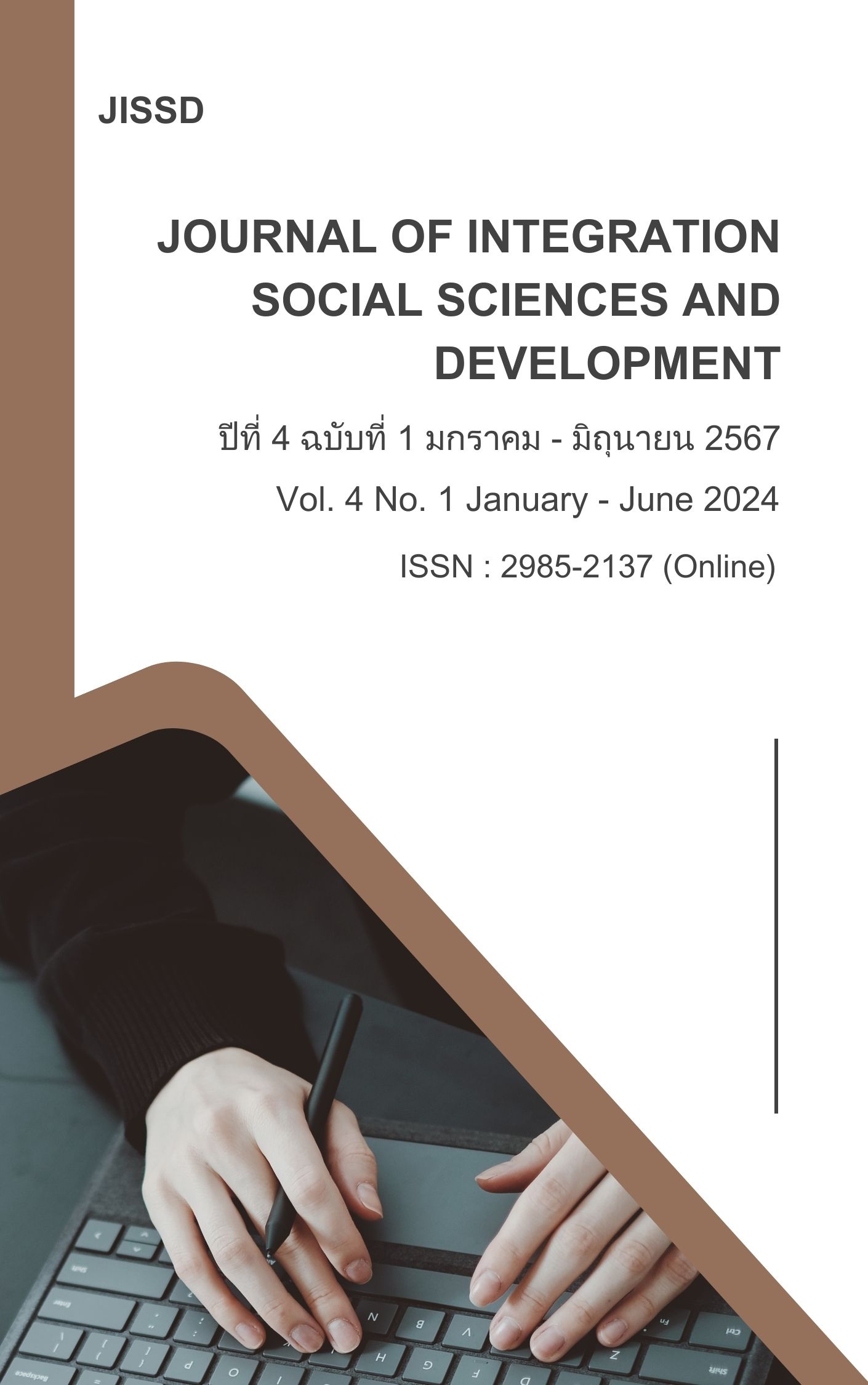Development of a Physical Activity Curriculum for Lower Secondary Students in Udonthani Municipality Schools
Main Article Content
Abstract
The purpose of the study was to develop an effective physical activity curriculum for lower secondary students of Udonthani municipality schools. The researcher employed the research and development methodology throughout the study. The development plan called for the following six steps: 1) Study of relevant basic data on the state and problems of physical activity in Udonthani municipality schools and physical activity. 2) Drafting of a physical activity curriculum and accompanying papers. 3) Examination of the draft curriculum and the accompanying papers by five experts and making adjustments in accordance with their recommendations. 4) Piloting the curriculum with 30 lower secondary student-volunteers from Udonthani municipality schools and making adjustments in accordance with their recommendations. 5) Implementation of the curriculum with 237 lower secondary students from Mathayom Thetsaban 6 municipality school. and 6) Evaluation of the curriculum for its effectiveness. The results of the study were as follows: 1) Significant characteristics of the curriculum are as follows: 1.1) The curriculum stipulated that a student must attend at least 80% of the training session and also performed significantly better in physical fitness in order to meet the passing criterion. 1.2) The curriculum accompanying papers were a handbook for teachers. The handbook was designed to facilitate their comprehension of the lesson plan and implementation to meet desired objectives. 2) The study of the curriculum effectiveness was found that the students passed the prescribed criterion; the students had the better physical fitness.; the average percent of the students’ activity attendance was 90.25, which were higher than the criterion of 80 percent; and also the students and stakeholders were satisfied with the curriculum at a “high” level. It is concluded that the developed curriculum was effective in improving the physical activity levels of lower secondary students in Udonthani municipality schools.
Article Details
References
กนกรส หงส์ทอง. (2530). การเปลี่ยนแปลงของหัวใจ ระบบไหลเวียนเลือด และระบบหายใจต่อการออกกำลังกาย. กรุงเทพฯ: คณะแพทย์ศาสตร์ จุฬาลงกรณ์มหาวิทยาลัย.
กรมพลศึกษา. (2555). แบบทดสอบสมรรถภาพทางกายของเด็กไทย อายุ 7-18 ปี. กรุงเทพฯ: สัมปชัญญะ.
กรมวิชาการ, กระทรวงศึกษาธิการ. (2545). คู่มือการจัดการสาระการเรียนรู้กลุ่มสาระการเรียนรู้สุขศึกษาและพลศึกษา ตามหลักสูตรการศึกษาขั้นพื้นฐาน พุทธศักราช 2544. กรุงเทพฯ: องค์การรับส่งสินค้าและพัสดุภัณฑ์ (ร.ส.พ.).
กระทรวงสาธารณสุข. (2550). ข้อเสนอแนะ แนวทางการมีกิจกรรมทางกาย (Physical Activity) ที่เหมาะสมสำหรับเด็กและเยาวชนในโรงเรียน. กรุงเทพฯ: โรงพิมพ์ชุมชนสหกรณ์การเกษตรแห่งประเทศไทย.
เจริญ กระบวนรัตน์. (2556). กิจกรรมทางกาย. วารสารสุขศึกษา พลศึกษา และสันทนาการ, 39(1), 5-6.
ชูศักดิ์ เวชแพทย์ และกันยา ปาละวิวัธน์. (2536). สรีรวิทยาการออกกาลังกาย. กรุงเทพฯ: ไทยวัฒนาพานิช.
พวงรัตน์ ทวีรัตน์. (2550). วิธีการวิจัยทางพฤติกรรมศาสตร์และสังคมศาสตร์. พิมพ์ครั้งที่ 8. กรุงเทพฯ: เจริญผล.
ภาณุ กุศลวงศ์. (2558). การพัฒนาหลักสูตรครูผู้ฝึกสอนกีฬาเทควันโด ระดับมัธยมศึกษา. (ครุศาสตรดุษฏีบัณฑิต, จุฬาลงกรณ์มหาวิทยาลัย).
มนสิช สิทธิสมบูรณฺ. (2540). เอกสารการฝึกอบรมการวิจัยการวิจัยในชั้นเรียน. พิษณุโลก: คณะศึกษาศาสตร์ มหาวิทยาลัยนเรศวร.
วรพนธ์ จันทรธีระยานนท์. (2559). การพัฒนาหลักสูตรเสริมสร้างจิตสาธารณะ สำหรับนักศึกษาระดับปริญญาตรี มหาวิทยาลัยราชภัฏมหาสารคาม. (ปรัชญาดุษฏีบัณฑิต, มหาวิทยาลัยราชภัฏมหาสารคาม).
วาโร เพ็งสวัสดิ์. (2540). การวัดและประเมินความพร้อมสำหรับเด็กอนุบาลด้านร่างกายและสังคม. มหาสารคาม: มหาวิทยาลัยมหาสารคาม.
ศิริรัตน์ หิรัญรัตน์. (2534). การสร้างเสริมสมรรถภาพทางกายและกีฬา. กรุงเทพฯ: คณะแพทยศาสตร์ศิริราชพยาบาล มหาลัยมหิดล.
สุพิตร สมาหิโต และคณะ. (2548). การสร้างแบบทดสอบสมรถภาพทางกายที่สัมพันธ์กับสุขภาพสำหรับผู้สูงอายุ. กรุงเทพฯ: มหาวิทยาลัยเกษตรศาสตร์.
Caterino, M. C., & Polak, E. D. (1999). Effect of Two Types of Activity on the Performance of Second, Third and Fourth Grade Student on a Test of Concentration. Perception and Motor Skills, 89, 245-248.
Dumith, S.C., D.P. Gigante, M.R. Domingus, and H.W. Kohl. (2011). Physical Activity Change during Adolescence: A Systematic Review and a Pooled Analysis. International Journal of Epidemiology, 40(3), 685-698.
Keays, J.J., & Allison, K. R. (1995). The Effects of Regular Moderate to Vigorous Physical Activity on Student out Comes. Journal of Public Health, 86, 62-66.
Kwak, L., Kremers, S., Bergman, P., Ruiz, J. R., Rizzo, N. S., & Sjostrom, M. (2009). Associations between physical activity, fitness, and academic achievement. The Journal of Pediatrics, 155, 914-918.
Lindvall, O., Kokaia, Z., Bengzon, J., Elmer, E, & Kokaia, M (1994). Neurotrophins and Brain Insult. Trends Neuroscience, 17, 490-496.
Sallis, J. F., Mckenzie, T, L., Kolody, B., Lewes, M. Marshall, S., & Rosengrad, P. (1999). Effects of Health Related Physical Education on Academic Achievement. Research Quarterly for Exercise and Sport, 70, 127-134.
Sibley, B., & Etnier, J. (2003). The Relationship Between Physical Activity and Cognition in Children: a Metaanalysis. Pediatric Exercise Science, 15, 243-253.
Singh-Manoure, A., Hillsdon, M., Brunner, E., & Marmot, M. (2005). Effccts of Physical Activity on Cognitive Functioning in Middle Age: Evidence from the Whitehall II Prospective Cohort Study. American Journal of Publish Health, 95(12), 2252-2258.
Taras, H. (2005). Physical Activity and Student Performance at School. Journal of School Health, 75(6), 214-218.
Tomporowski, P. (2003). Cognitive and Behavioral Responses to Acute Exercise in Youths: A Review. Pediatric Exercise Science, 15, 348-359.


